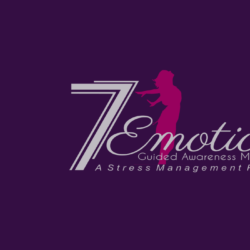For many years, people with fibromyalgia were often misdiagnosed and misunderstood. Now there is a growing recognition of this very cruel condition defined by chronic pain and tenderness, among other symptoms. Can you imagine something as well intentioned as a hug being painful? For those with fibromyalgia, this level of hypersensitivity to touch is often their harsh reality.
About 10 million US adults are facing this reality. Most are diagnosed during middle age and women much more than men. In fact, as many as 90-percent of cases are diagnosed in women.[1]
Western medicine now looks at fibromyalgia as a result of a confused central nervous system. Because of a processing problem in the brain and spinal cord, pain signals are amplified. Pain all over the body is also often accompanied by fatigue, sleep, memory and mood issues.[2] Additional symptoms can include tingling and numbness in the hands and feet, digestive issues such as bloating and constipation as well as environmental sensitivities. These sensory abnormalities go beyond sensitivity to touch. Environmental influences, even seemingly harmless everyday sounds, sights and smells can wreak havoc on the nervous system of someone with fibromyalgia.
While the cause is unknown, it is well understood that various triggers can play a role in the onset and aggravation of symptoms. These triggers include physical and emotional traumas, surgery, and infections. Research has also found “irregularities” in the immune system of patients with fibromyalgia,[3] though the disorder does not typically present the same inflammation that auto-immune diseases do. However, people with auto-immune conditions such as Lupus or Rheumatoid arthritis are more likely to develop fibromyalgia. [4] The very nature of this disorder is still being researched and understood. It has been suggested that “future studies may discover that autoimmunity plays a part in some or all cases.”[5]
Diagnosis is assessed through the patient’s history, physical examination, X-rays and bloodwork to rule out conditions with similar symptoms, such as multiple sclerosis and mental health issues.
Treatments include medications which can be any combination of the following: painkillers antidepressants, sleeping aids, muscle relaxants, and anti-seizure drugs. Drug therapy needs to be managed carefully because of side effects and only has a supportive role in symptom management. Medications are mainly used to complement other rehabilitative efforts [6] such as physical therapy, stress-reduction techniques, Cognitive Behavioral Therapy (CBT), and sleep training.
In Traditional Chinese Medicine (TCM) fibromyalgia is generally considered a Bi (literally meaning obstruction) Syndrome, where pathogenic forces described as wind, cold and/or dampness invade the energy pathways of the body and lead to blockage. The blockage is considered the cause of the pain. The body becomes susceptible to these forces because of a deficiency or stagnation of blood and energy.
Various therapeutic methods are used to address the blockages and underlying conditions such as acupuncture, tuina (Chinese style massage), guasha (scraping), cupping (a decompression technique) and herbs. These all have their place in modern treatment. Tui na is known to increase endorphins and raise the pain threshold for patients.[7] Gua sha has been shown to have anti-inflammatory and immune regulating effects. [8] A combination of acupuncture and cupping therapy proved significantly more effective than conventional medications for reducing pain and improving mood in Fibromyalgia patients. Other trials demonstrated positive effects of Chinese herbal medicine on pain reduction compared with conventional medications. No serious adverse effects of TCM therapies were reported in any of these trials. [9]
Without adequate treatment, dealing with fibromyalgia can pretty much guarantee a lower quality of life, as it is associated with more hospitalizations, higher rates of depression (3X more!), and higher death rates from suicide and injury. [10] All safe treatment options should be explored. Chinese Medicine offers effective approaches that boast thousands of years of safety testing and many modern day applications.
If you or someone you know is suffering with Fibromyalgia, or any type of chronic painful condition, remember your local acupuncturist has the diagnostic and treatment tools to help! Schedule today!
[1] https://www.everydayhealth.com/fibromyalgia/myths-facts-about-fibromyalgia/
[2] https://www.mayoclinic.org/diseases-conditions/fibromyalgia/in-depth/fibromyalgia-symptoms/art-20045401
[3] https://southernpainclinic.com/blog/why-does-fibromyalgia-weaken-the-immune-system/#
[4] https://www.hss.edu/conditions_lupus-and-fibromyalgia.asp#:
[5] https://www.verywellhealth.com/is-fibromyalgia-an-autoimmune-disease-716148
[6] https://www.ncbi.nlm.nih.gov/pmc/articles/PMC5662432/
[7] https://eastwesthealingcenter.net/wp-content/uploads/2018/07/Fibromyalgia.pdf
[8] https://www.pacificcollege.edu/news/press-releases/2015/05/05/the-science-of-gua-sha
[9] https://www.ncbi.nlm.nih.gov/pmc/articles/PMC3110829/
[10] https://www.cdc.gov/arthritis/basics/fibromyalgia.htm







